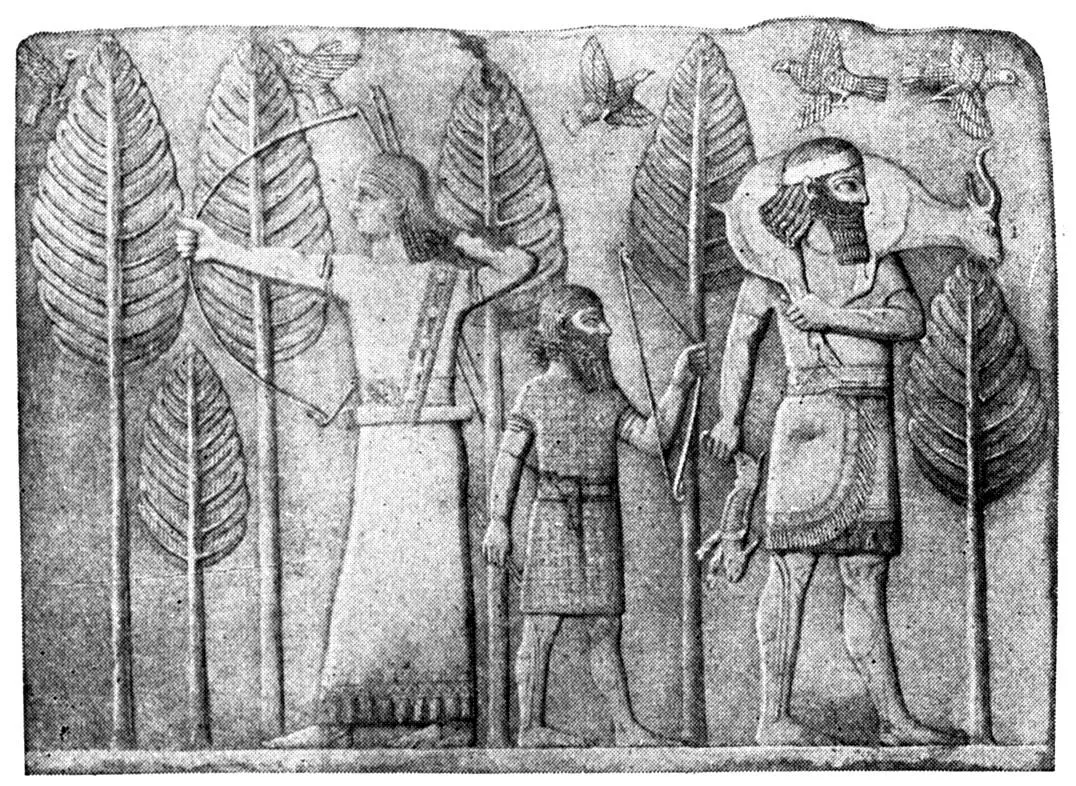Assyrian Empire
Background
The Assyrians were a people from the north of Mesopotamia who were known for their love of warfare and conquering others. Their empires went through a number of phases stretching over nearly 1500 years.


Old Assyrian Period
- The first Assyrian Empire lasted from around 2000 to 1450 BC. During this period, the Assyrians established the city-states of Ashur, Nineveh and Arbela, which all had houses, temples and palaces inside a city wall.
- Ashur, in particular, was a very powerful trading centre. Copper and textiles were among the many commodities that made some Assyrians very rich.
- The most important Assyrian king at this time was Shamshi-Adad I. Shamshi-Adad was responsible for expanding the empire.
- The Old Assyrian Period came to an end after Shamshi-Adad died. King Hammurabi of Babylonia conquered Ashur and the Assyrian Empire crumbled.

The Middle Empire
- A new Assyrian king by the name of Ashur-Uballit had won the freedom of his people by defeating the Mitanni Empire that had come to dominate the north of Mesopotamia.
- Ashur-Uballit immediately set about restoring the past glory of Assyrian rule, but this was only really achieved later at around 1114 BC under King Tiglath-Pileser I.
- Tiglath-Pileser oversaw the development of a very strong military force which allowed the Assyrian Empire to make significant gains both in Mesopotamia and beyond.

The Neo-Assyrian Empire
- This empire lasted from around 1000-612 BC and this was the most successful period for the Assyrians. They overthrew neighbouring kingdoms one by one and eventually took control of a massive area running from Mesopotamia to Egypt.
- Once they had established control, the Assyrians would send their governors to rule a given place and the locals would be forced to hand over their gold, silver and a range of other commodities to enrich the Assyrians.
- Although the Assyrians are better known for their brutality and military power, they also had remarkablecities and lived in a fairly civilised environment. This was most evident in their grand palaces which had grand sculptures of human heads and bulls at their entrances. Inside there were friezes and colourful murals depicting Assyrian conquest. There were big feasts where they drank wine and ate meat.
- Most Assyrians lived more modestly and many of them were farmers. They grew a wide variety of crops, such as barley, vegetables and fruit. They also kept sheep and goats.
- All Assyrians had to follow the same strict codes of law. Those who failed to do so were punished in the most severe manner.
- War and conquest helped the Assyrians get control of trade and trade routes. They imported wood, wine, metals, as well as animals, such as horses. They also exported their own goods, including textiles.

The Assyrian war machine
- The key to successful expansion was the ruthless and extremely cruel Assyrian army that was prepared to do anything to achieve its aims.
- Assyrian soldiers tortured and killed their enemies in the most brutal manner imaginable. Those who resisted were usually killed instantly and without mercy.
- The Assyrians also engaged in the practice of deporting entire tribes of people all over their empire as their skills would help the Assyrians become very prosperous.
- They learned to make weapons and armour out of iron. The Assyrians were masters of the siege and found many ways to destroy well-defended enemy cities, such as siege towers and battering rams.

King Ashurbanipal’s library
- King Ashurbanipal was the last of the great kings of Assyria and he ruled from around 668-627 BC. He had a new palace built in the city of Nineveh and began to collect everything that had been written in Mesopotamia. This led to the creation of Ashurbanipal’s famous library. It contained more than 30,000 inscribed clay tablets.



